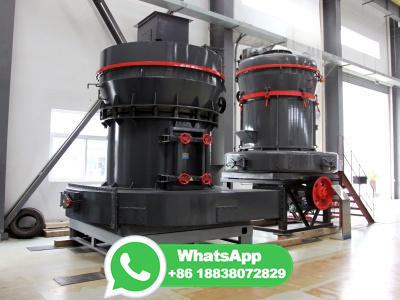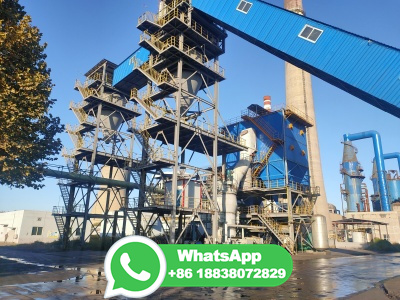
How do you turn carbon into diamond?Subscribe: All the best Earth Lab videos Best of BBC ...
WhatsApp: +86 18203695377
In 2003, a coalition of governments, civil society and diamond industry established the Kimberley Process Certification Scheme, aimed at preventing the flow of conflict diamonds.
WhatsApp: +86 18203695377
When a genuine raw black diamond is examined, it will be uniformly black throughout the stone. If the stone appears to be multiple colors of black, it is most likely a fake. Purchase a highquality diamond tester to ensure that you're purchasing a genuine raw black diamond when making your purchase. Any flaws or faults in the stone will be ...
WhatsApp: +86 18203695377
Coal is not a good source for diamond formation. Since coal is formed from plant debris and the oldest land plants are younger than almost every diamond that has ever been dated, it is easy to conclude that coal did not play a significant role in the formation of Earth's diamonds. Thanks for checking out this weeks Think About It Thursday!
WhatsApp: +86 18203695377
A common misconception is that coal is correlated with diamond formation. Coal is also made of carbon, which makes sense why there would be confusion. ... In the process for CVD diamonds, a small slice of diamond seed (which is often an HPHTproduced diamond) is placed in a chamber and heated to extreme temperatures, much like a rough diamond ...
WhatsApp: +86 18203695377
(Diamond is another allotrope of carbon.) Graphite is the final stage of the carbonization process. Graphite conducts electricity well, and is commonly used in lithium ion batteries. Graphite can also resist temperatures of up to 3,000°C (5,400°F). ... the Surface Mining Control and Reclamation Act of 1977 regulates the process of coal mining ...
WhatsApp: +86 18203695377
The process would require more than 1000 times the atmospheric pressure and temperatures above 1000C to change coal's crystal structure. In fact, if the right conditions are met, peanut butter a carbonrich material can be transformed into diamonds. How To Turn Coal Into Diamonds In Under Billion Years
WhatsApp: +86 18203695377
There are five main steps in cutting a diamond: Planning An expert will carefully plan how the diamond will be cut using computers and the latest technology. Cleaving This is the process where diamonds are used to cut one diamond into multiple pieces. Bruiting This step is where the diamond is shaped into a specific cut.
WhatsApp: +86 18203695377
Coring ( diamond drilling) is another way of collecting information about a potential coal resource. The drill rig is equipped with a hollow tube, and as the drill pushes the rods into the ground, a cylindrical piece of the rock is pushed into the hollow tube. These samples are usually the length of a drill rod, which is 6 meters.
WhatsApp: +86 18203695377
This was achieved through the utilization of a process known as High Pressure High Temperature. By imitating the conditions in which diamonds are naturally formed, this process was able to produce real diamonds out of diamond seeds. Later on, another process was developed for the creation of synthetic diamonds: Chemical Vapor Deposition. By ...
WhatsApp: +86 18203695377
Aether may be in the process of redefining the diamond industry, but it still conforms to consumer expectations. Jewelry brands are not mining a natural phenomenon when they equate diamonds and devotion, after all. This link—and the popularity of diamond rings—were labgrown in a 1940s marketing program by the diamond company De Beers—the ...
WhatsApp: +86 18203695377
Simply put, diamond formation occurs when carbon deposits deep within the earth (approximately 90 to 125 miles below the surface) are subject to high temperature and pressure. Some stones take shape in a matter of days or months, while others take millions of years to materialize. In the case of colored diamonds, the color is caused by trace ...
WhatsApp: +86 18203695377
In the creation of a diamond, there was never coal involved. In fact, most dated diamonds are substantially older than Earth's first land plants, which are used as a product when coal is formed. Diamonds deteriorate to graphite under normal settings because graphite has a lower energy configuration.
WhatsApp: +86 18203695377
Synthetic diamond. Labgrown diamond ( LGD; [1] also called laboratorygrown, laboratorycreated, manmade, artisancreated, artificial, synthetic, or cultured diamond) is diamond that is produced in a controlled technological process (in contrast to naturally formed diamond, which is created through geological processes and obtained by mining ).
WhatsApp: +86 18203695377
Coal is an abundant natural resource that can be used as a source of energy, as a chemical source from which numerous synthetic compounds (, dyes, oils, waxes, pharmaceuticals, and pesticides) can be derived, and in the production of coke for metallurgical processes. Coal is a major source of energy in the production of electrical power ...
WhatsApp: +86 18203695377
Diamonds are actually much older than plants, which are the main ingredient for the formation of coal. The basic oldfashioned recipe for a diamond calls for: Carbon deposits, deep within the earth, that are subjected to temperature and pressure. The exact time that it takes for a diamond to form within the earth is unknown.
WhatsApp: +86 18203695377
XRT sensors find applications in sorting scheelite, wolframite, coal, diamonds and iron ore, while inductive sensors can be used to identify sulphide ores. Minerals that have the potential for identification using XRF for elemental analysis include nickel, copper and zinc sulphides, gold and platinum, chromite, manganese, uranium, and bauxite ...
WhatsApp: +86 18203695377
Keep in mind that diamonds are pure carbon, but so too is coal and pencil lead (which is graphite). Similar to how water can be an air, liquid, or gas the heat, pressure, and molecular bonding pattern of the carbon is what create the final product. ... The CVD labgrown diamond process which create multiple diamonds per run. HPHT ...
WhatsApp: +86 18203695377
Diamond ground; Leadzinc ore; Zinc ore; ... Since the solids in the medium are much finer than in the Chance process, the coal that can be treated can also be much finer. This perhaps explains why a coal containing as little as to per cent ash is steadily produced, with a yield practically equal to the theoretical floatandsink yield. ...
WhatsApp: +86 18203695377
Method B: The industrial diamond method. This one's much more involved technically and was mentioned already. You can macerate coal into coal dust, craft it into coal ball by placing 8 coal dust around a flint, compress the ball to get a compressed coal ball, craft it into a coal chunk by placing 8 compressed coal balls around an obsidian.
WhatsApp: +86 18203695377
Diamonds are formed beneath the Earth's surface over millions of years, through a complex geological process. This process begins with carbon, which is found in coal beds near the Earth's surface. Over time, the coal is subjected to extreme heat and pressure, which transforms it into diamonds. Exploring the Geological Process of How ...
WhatsApp: +86 18203695377
There are two main labgrown diamond production methods: the high pressure/high temperature process (HPHT) and chemical vapor deposition (CVD). Both methods are commonly used, but CVD is becoming more popular for producing gemquality synthetic diamonds for jewelry. HPHT is used more often to create synthetic diamonds for industrial use.
WhatsApp: +86 18203695377
According to Live Science, to make a diamond there is a three step process. Once found, the diamond is put under pressure of 725,000 pounds per square inch. It is also put under extreme heat of ...
WhatsApp: +86 18203695377
In this stage of the process, gold is oxidised. Zinc dust is then added to the cyanide solution. The zinc then takes the place of the gold, so that the gold is precipitated out of the solution. This process is shown in Figure Figure : Flow diagram showing how gold is processed. Characteristics and uses of gold (ESBRN)
WhatsApp: +86 18203695377
Formed deep within the earth's mantle, diamonds are brought to the earth's surface during violent pressure and change. As with diamonds, so it is with you and me. Life's sudden upheavals bring our true worth, value, and strength to the surface. The incredible pressure we face during hardships and fiery trials cause the hidden treasure ...
WhatsApp: +86 18203695377
it can transform one ton of captured CO2 into "millions of dollars' worth of diamonds". That process starts with Aether purchasing carbon dioxide from Climeworks' facility in Switzerland ...
WhatsApp: +86 18203695377
Because of the tremendous pressure that exists in this area of the earth and the extremely high temperatures, a diamond begins to develop gradually over time. The entire process takes between 1 billion and billion years, which corresponds to around 25 percent to 75 percent of the age of our planet's crust.
WhatsApp: +86 18203695377
Coal is the most abundant fossil fuel on Earth. Its predominant use has always been for producing heat energy. It was the basic energy source that fueled the Industrial Revolution of the 18th and 19th centuries, and the industrial growth of that era in turn supported the largescale exploitation of coal deposits. Since the mid20th century, coal has yielded its place to petroleum and natural ...
WhatsApp: +86 18203695377
The process of making diamonds from coal is called carbonadoing, and it is a very difficult and expensive process. The first step is to find a deposit of coal that is at least % pure carbon. The next step is to heat the coal in an environment that has no oxygen, such as in a vacuum or in an inert gas. The coal is heated to a temperature of ...
WhatsApp: +86 18203695377
From Coal To Diamond: The Long And Winding Carbon14 Journey. The process of turning carbon into a diamond involves a great deal of pressure and extreme temperatures. Carbon14 is a type of transformation that has taken between 1 billion and 3 billion years to occur. Carbon14 is the catalyst that converts coal's carbon to a valuable gemstone.
WhatsApp: +86 18203695377
A diamond is created when soot or coal is subjected to intense heat and pressure for a long period of time. What this does is rearrange the molecular structure of the coal, creating a new one ...
WhatsApp: +86 18203695377
Aug 30th 2021. Diamonds Aren't Made From Coal. So Why Does Everyone Think They Are? "A diamond is a chunk of coal that did well under pressure," or so the saying goes. This old adage has probably been used to inspire a person or two to reach for diamond status, but there's just one problem with it A diamond isn't a lump of coal that ...
WhatsApp: +86 18203695377
Lab grown diamonds have been created in an environment that replicates the process of natural diamonds forming in the earth. There are some differences between a mined diamond and a lab created diamond, but most of their properties are the same. Both mined diamonds and lab created diamonds have the same overall chemical, physical, and optical ...
WhatsApp: +86 18203695377
The process of making diamonds begins by cutting very small pieces of a real diamond to produce tiny scraps that are call waivers. These waivers are then placed in a metal apparatus that recreates the conditions we discussed earlier. After 2 weeks, the waivers grow into stones. The stones are then trimmed and polished to the classic diamond ...
WhatsApp: +86 18203695377